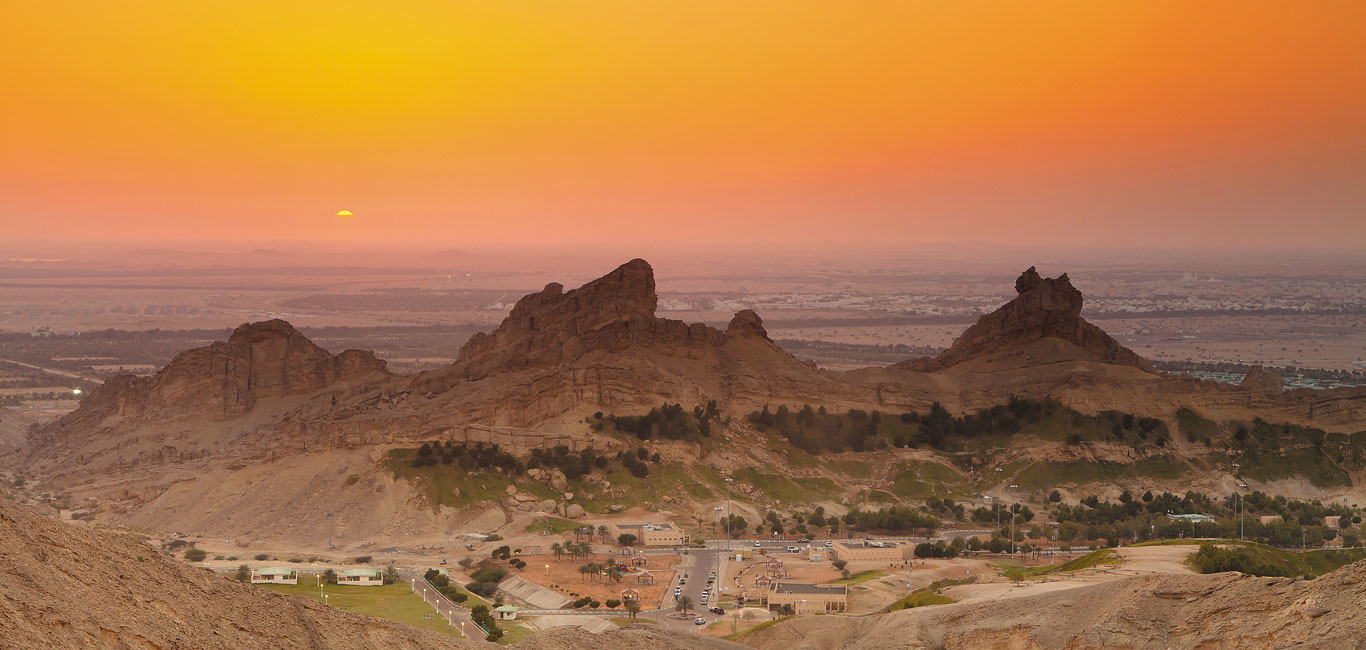Submitted by: Madhav Juneja
Abu Dhabi’s tourism sector has skyrocketed over the last decade. I moved to New York University Abu Dhabi in 2016 and have since had the opportunity to experience the length and breadth of Abu Dhabi’s tourism. While the extreme roller-coasters at Ferrari World and dune bashing in the Liwa region of Abu Dhabi were my go-to adrenaline inducing activities, I found a peaceful abode in Jebel Hafeet.
Jebel Hafeet is located in Al Ain in the Eastern region of the UAE. The imposing 4,098 ft (1,249 m) stand-alone mountain is located close to the Buraimi border with Oman and is quite accessible by public transport from Abu Dhabi city. During my first trip to Jebel Hafeet, a group of us took a bus from Al Wahda Bus Station in Abu Dhabi city to the main Al Ain Bus Terminal (an approximately 2-hour journey priced at AED 30). In Al Ain, we walked over to a local bus terminal from which we caught a bus that took us to the base of Jebel Hafeet (approximately 1-hour). A useful tip for people accessing the area in their private vehicle: search for ‘Mercure Grand Jebel Hafeet Al Ain’ as opposed to just ‘Jebel Hafeet’. Mercure Hotel is located close to the top of the peak so following directions to the hotel ensures access to the area from the mountainside with the road on it.
The oasis, children’s play area and hot water springs at the base of Jebel Hafeet present an opportunity to gear up before heading to the top or wind down at the end of a tiring day on the mountain. You can enjoy views of the 11.7 km three-lane road (2 uphill and 1 downhill) that appears to wrap the mountain in a snake-like manner. We were keen to hike up before the sunset so filled up fresh drinking water and began our journey to the top. We were unable to find a specific hiking trail so tried to create our own trail to the top. There were sections with very loose rock, so one needs to be careful when walking on uncharted territory. We returned to walk on the tarred road where the off-road slope was too steep or we couldn’t improvise a path. This steep road is an ideal training ground for cyclists (8% average ascent) and marathon runners (there is an annual Jebel Hafeet Mercure Cycling Challenge held every January!) The walk up can be exhausting but with every step, the views become more rewarding. After a couple of hours, we emerged at the top of Jebel Hafeet as we reached Mercure Hotel. We rewarded ourselves with a glass of fresh orange juice at the pool-side of the hotel. This is an ideal spot to witness the sunset and enjoy a 360-degree panoramic view which compromises vast flatlands with Al Ain in the distance on one side and Oman on the other side.
The northern/eastern backside (where there is no road) of Jebel Hafeet has historic tombs which are a part of the UNESCO Heritage sites. I went bouldering (rock climbing performed on small rock formations without a rope or harness) in this area and explored these little tomb structures. These Bronze Age tombs were built between 3200 BCE and 2700 BCE and each domed tomb comprises a single round or oval chamber about 2 to 3 meters across and constructed of uncut or rough-cut local rock. A narrow entrance, usually facing south, pierces the wall at the ground level. It appears to be a non-commercial, unpopular zone which can be hard to find, but is definitely worth the trek.
Jebel Hafeet has something in store for everyone – a romantic setting for a family outing, a training ground for athletes and a delightful road for motorists. It occupies a special place in my heart and is an escape from the hustle of everyday urban life.



